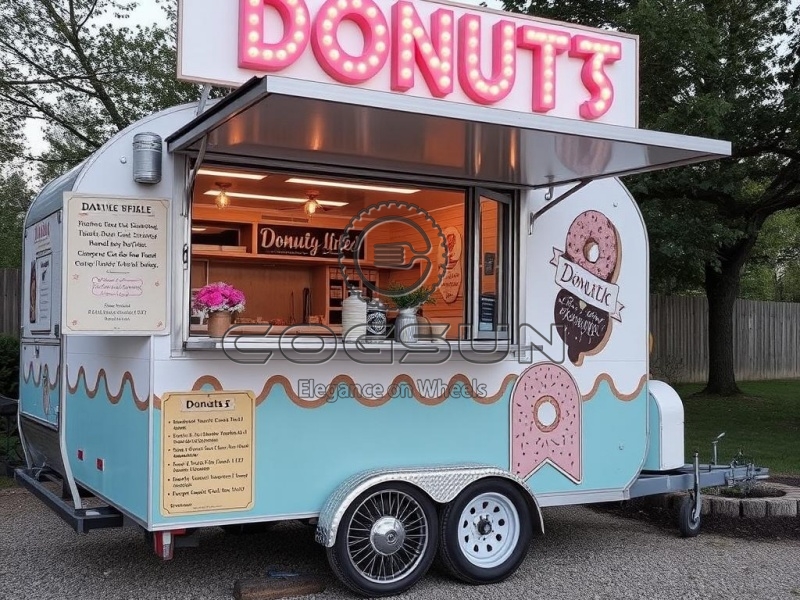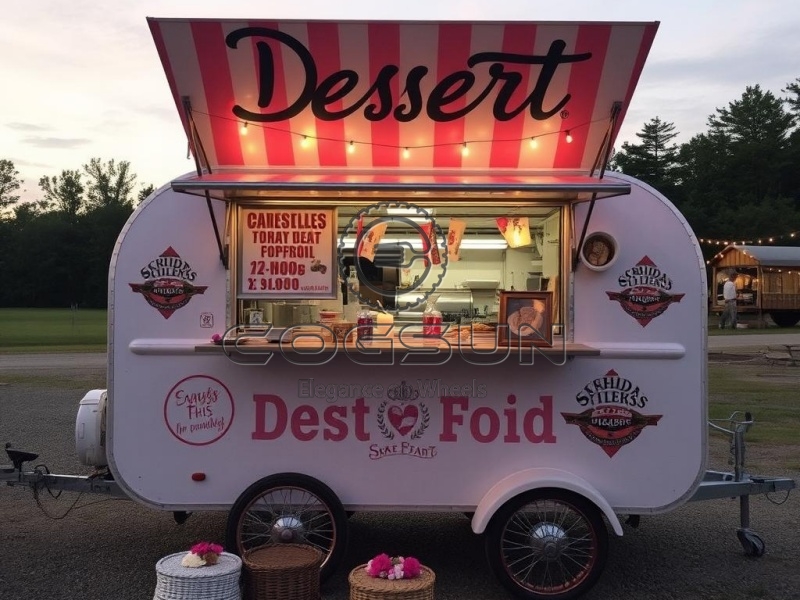The seafood trailer is a mobile kitchen unit designed specifically for on-site seafood cooking and sales. It integrates professional seafood processing equipment and preservation technology on a trailer, allowing for rapid deployment in locations such as street vendors, markets, beaches, and festivals. Its core value lies in delivering exceptional freshness “from sea to table.” Through live, transparent cooking processes, it offers consumers an interactive and authentic seafood dining experience while also meeting the operational needs of restaurant entrepreneurs with low costs and high flexibility.

Key Features
1.Freshness First, Source Control
- Short Supply Chain Management: Partnering with local fishing ports or suppliers, we deliver live or chilled ingredients daily to minimize transportation losses.
- Visual Preservation: The trailer is equipped with transparent refrigerated cabinets or live aquaculture tanks to visually display the freshness of the seafood, fostering consumer trust.
2.Scenario-Based and Interactive
- Open Kitchen Design: Customers can watch chefs prepare seafood, grill it, steam it, and more, enhancing entertainment and engagement.
- Themed Menus: Offer seasonal specials tailored to regional characteristics, or incorporate exotic flavors.
3.Flexibility and Low-Cost Operations
- Easy Mobility: The trailer can be towed to high-traffic areas, eliminating the high rent requirements of a fixed storefront.
- Quick Start/Stop: Venue setup and equipment commissioning can be completed in 1-3 hours, adapting to both temporary events and long-term operations.
4.Environmental and Safety Standards
- Wastewater Treatment System: Safely discharge cooking wastewater to prevent public pollution.
- Food-Grade Materials: Workstations and storage cabinets are constructed of 304 stainless steel, meeting hygienic regulations.
Internal Equipment
1.Seafood Processing and Storage Area
- Live Aquaculture Tanks: A circulating water system keeps shellfish, crabs, and other fresh produce alive.
- Fresh Chillers: Storing fish and shrimp in separate compartments, equipped with temperature indicators to ensure food quality.
- Washing Stations: A stainless steel sink with a high-pressure spray gun allows for rapid descaling and evisceration.
2.Cooking Equipment Area
- Multi-function Cooktop: Gas or induction cooktops support frying, stir-frying, steaming, and boiling.
- Frying Equipment: Commercial deep fryers are used for quick-serve dishes like fried shrimp and squid rings.
- Combination Steamer/Bake-In-One: Quickly steam lobster and crab, or bake garlic oysters and cheese-baked scallops.
3.Seasoning and Food Preparation Area
- Spice Rack: Organizes sauces, spices, lemon slices, and other ingredients for easy access by the chef.
- Insulated Table: Maintains the temperature of cooked dishes to prevent delays and reduced taste.
4.Cleaning and Sanitation System
- Double Sink: Separates raw and cooked food for cleaning to prevent cross-contamination.
- UV Sterilizer: Stores tableware and tools to ensure sterility.
5.Power and Auxiliary Equipment
- Generator/Mains Power Port: Enables continuous operation in outdoor environments without power.
- Exhaust System: Powerful range hoods and ventilation ducts quickly remove cooking fumes. Smart Ordering Screen: Allows customers to place orders independently, reducing waiting times.
Application
1.Street and Night Market Economy
- Deployed in commercial streets, night markets, and food courts, it features cost-effective seafood snacks.
- Combined with “seafood + beer” combos, it attracts young consumers to enjoy late-night dining.
2.Tourism and Vacation Scenarios
- Beaches/Pier: Provide visitors with freshly caught and prepared seafood feasts, enhancing regional characteristics.
- In Scenic Areas: Install mobile seafood bars to alleviate the pressure of peak dining times.
3.Events and Festivals
- Music Festivals/Sporting Events: Offer “seafood buckets” and “platter combos” to meet the sharing needs of large groups.
- Corporate Team Building/Weddings: Customize seafood buffets or table-top dishes to elevate events.
4.Brand Marketing and Pop-up Stores
- Collaborate with seafood brands or e-commerce platforms to create themed trailers to promote new products or membership benefits.
- Creating buzz through limited-time operations and limited-edition dishes, the stalls attracted social media attention.
5.Community and public welfare initiatives
- Affordable seafood stalls at community cultural festivals fostered resident loyalty.
- In collaboration with the Fisheries Association, the stalls held a “sustainable seafood” education event to promote environmental awareness.




